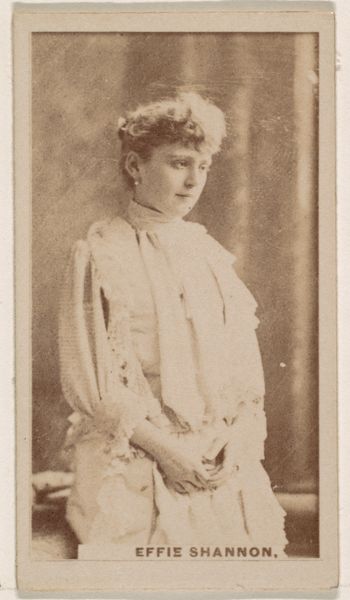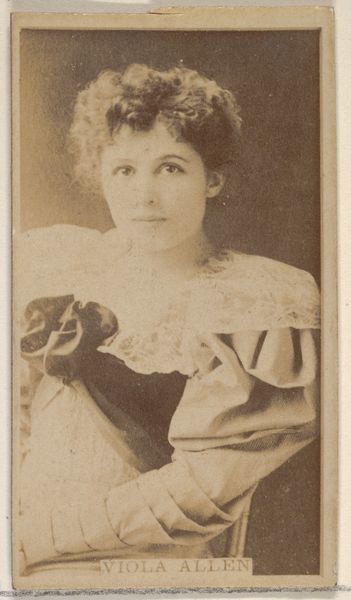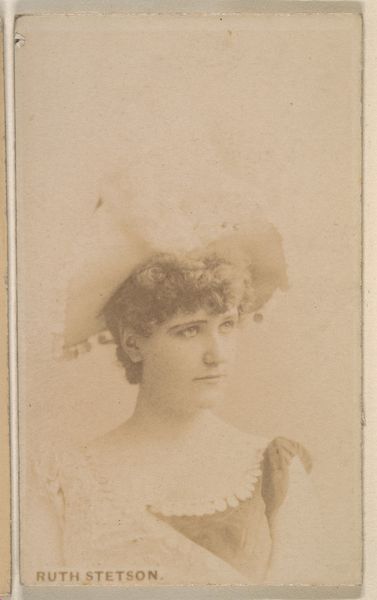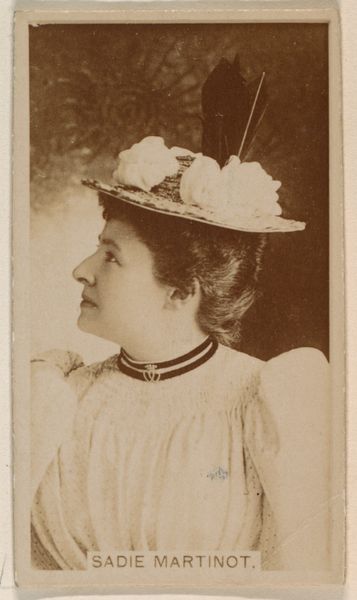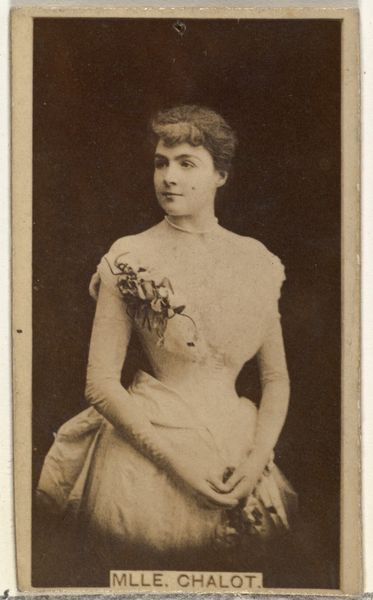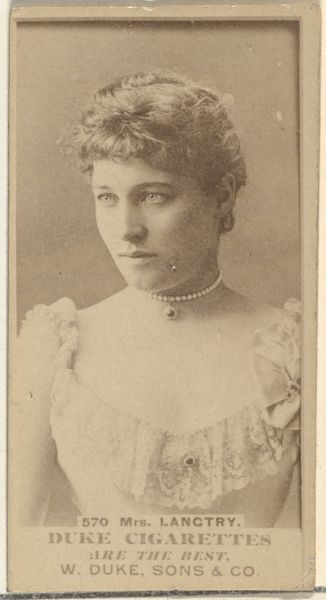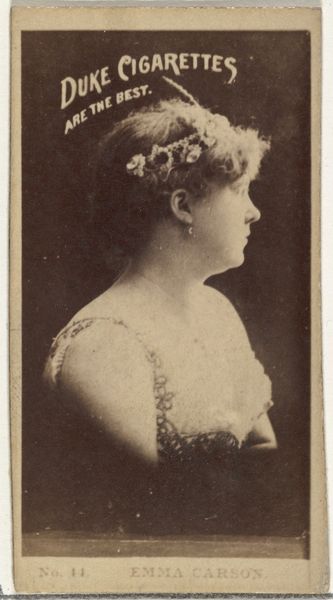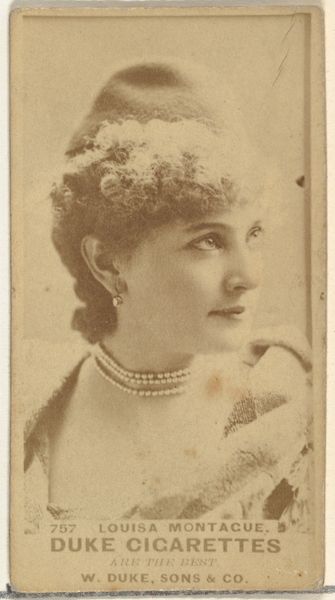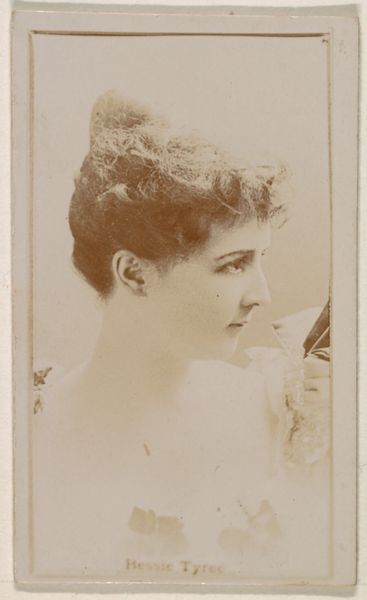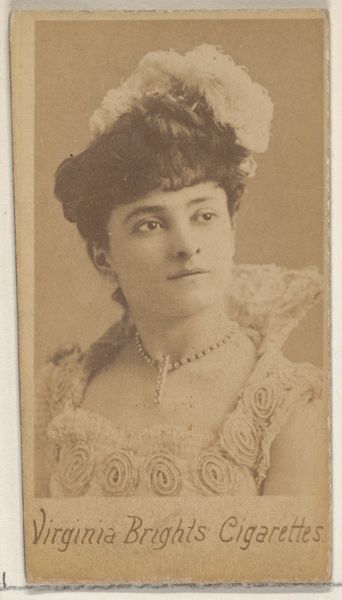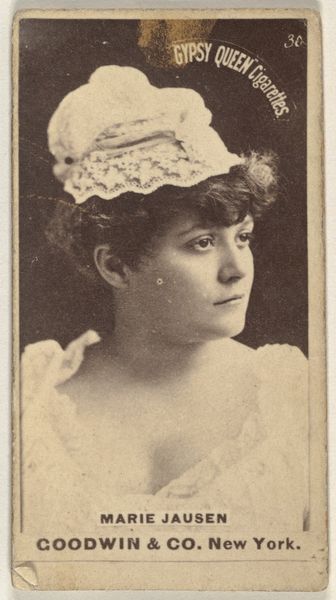
Card Number 143, Sutherland, from the Actors and Actresses series (N145-2) issued by Duke Sons & Co. to promote Cross Cut Cigarettes 1880s
0:00
0:00
drawing, print, photography, albumen-print
#
portrait
#
drawing
#
toned paper
# print
#
figuration
#
photography
#
albumen-print
Dimensions: Sheet: 2 5/8 × 1 7/16 in. (6.6 × 3.7 cm)
Copyright: Public Domain
Curator: This albumen print, "Card Number 143, Sutherland" by W. Duke, Sons & Co., dates back to the 1880s. Part of the Actors and Actresses series, it was used to promote Cross Cut Cigarettes. Editor: There’s a melancholy air to this portrait; she almost seems lost in thought, the composition centered tightly on her downwards gaze. The sepia tone gives it a wonderful sense of antiquated grace. Curator: Absolutely. Consider the production process—a photograph printed onto paper, then cut and included in cigarette packs. These weren't created as art objects initially but became immensely popular, reflecting the rising consumer culture and mass media's early forms. Editor: But there's an undeniable artistry in the composition itself. Note how the light catches her elaborate hairstyle, the soft, diffused focus that blurs the background. It's less about capturing precise likeness and more about conveying a certain idealized beauty through the tonal range. Curator: It's interesting to think about how labor factors in. On the one hand, you had studio photographers taking and printing these images en masse. On the other, the factory workers involved in cigarette production. And the tobacco farmers cultivating the very material fueling this commercial explosion. Editor: From a formal point of view, you have the intriguing use of the decorative elements on her garment. They almost seem to mirror the geometric logo for the cigarette brand itself—creating a subtle visual connection to what the image promotes. Curator: Indeed. The cards offered a glimpse into the celebrity culture of the late 19th century, albeit filtered through a highly commercialized lens. The commodification of images mirrors that of human labor in factories. Editor: Even the print medium itself becomes a metaphor; it is a representation, a flat depiction removed from the physical actress. What once may have seemed disposable becomes a precious relic of its time as photographic technologies evolved. Curator: Seeing the network of commodity exchange surrounding a mass media photograph provides insightful material context and enriches our appreciation. Editor: Agreed. By paying attention to this work’s formal characteristics as well as considering its original social function, our reading of the past shifts and opens up the portrait.
Comments
No comments
Be the first to comment and join the conversation on the ultimate creative platform.
